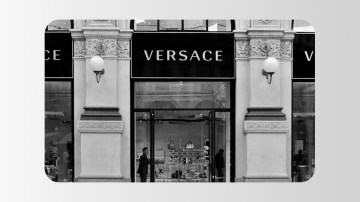According to its latest earnings, reported on Tuesday, Ermenegildo Zegna’s third quarter saw the company joining the long list of luxury brands with flagging revenues. Zegna’s fell by 7%. Zegna consists of the namesake brand along with Thom Browne and the Tom Ford fashion line.
Perhaps the most notable reported metric was its sales in China. Revenue in the region was down 22% in the quarter, echoing the problems seen by luxury companies including Burberry and LVMH. The Chinese luxury market, once one of the most reliable drivers of growth for the sector, is continuing to decline.
CEO Ermenegildo Zegna said it is unlikely that the issues facing the Chinese luxury market will clear up in the next year.
“China has gone through some challenging moments in 2024, which I believe will continue at least for the first part of 2025,” he said on the earnings call on Tuesday morning. “We have to be a little bit cautious in terms of the expectations for both Thom Browne and Zegna [in the region].”
During Golden Week, China’s biggest shopping holiday, sales for Zegna Group were down from last year, with Thom Browne particularly hit hard. Conversely, in markets like Europe, the Americas and the Middle East, Zegna saw double-digit growth.
Kathryn Read, founder of Kathryn Read Consulting, an international business and marketing consultancy based in Austria, said luxury spending is shifting back toward traditional markets.
“Since 2023, consumers have been able to travel again, and places like Milan and Paris are high on many people’s lists,” she said. “That means their luxury purchases are being made outside of China. This is partly being driven by price hikes in China on luxury items that many people feel are unjustified. In the past, there was a thriving arbitrage industry for products like handbags, and many brands are now looking to harmonize their price levels globally.”
Others have pointed out that the immense growth the Chinese luxury market saw in 2021 and 2022 was unsustainable from the beginning. Hermès saw a 45% sales increase in China in 2022, reportedly driven by limited spending options outside of China and pent-up demand, which has since been declining. The current state of the market can be interpreted as a correction to the unique circumstances of the last three years.
Zegna said one of his plans for bringing back growth in China is focusing on the “uber-luxury” segment, or the highest-end earners who buy expensive made-to-measure products.
“Uber-luxury made-to-measure will continue to be important in China,” he said. “[And catering to that] is a deep cultural change for our brand and for our people in the stores who are moving more from a transaction-driven [relationship] to an interaction-driven [relationship] with the customer. … We are not yet where we aim to be, but the path is clear, and we are now completing the last step moving forward.”
Investment in the Chinese luxury market isn’t a dead end, Read said. There’s still growth to be found in places outside of Hong Kong and Shanghai. The rural-urban wealth gap in China is narrowing, for example. But to capture it, brands will have to rethink how they approach the market.
“Experiential luxury is becoming the watchword among younger Chinese consumers,” Read said. “China certainly still has huge potential. Lower-tier cities are rapidly growing, in terms of purchasing power. But brands will need to understand what consumers want, if they are going to be successful in China. And that means continuously evolving at a high speed.”




